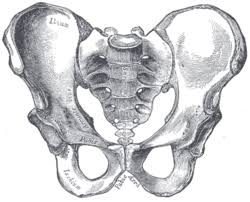
Over the years, many interests have been part of my career. A base in orthopedics, or the study of muscle and joint issues, lead to an interest in acupuncture and dry needling. Many other interests popped up here and there, but I felt like something was missing. It was the pelvis – and pelvic floor physiotherapy.
Embarking on the pelvic floor physiotherapy and pelvic health world has been an amazing and rewarding step. It is truly about the quality of life for form and function. Clients returning to sport and activity. Moms being able to lift their children, run and jump with their children, without worry of urinary leakage. Feeling confident in their ability and overall strength.
But what is the pelvis? It is the foundation. It allows the trunk to bend forward, and allows us to lift our legs. The pelvis is the site of numerous muscles attaching to it – core muscles, back muscles, leg muscles, and muscles for the pelvic floor.
The pelvic floor is a series of muscles with numerous functions, but most importantly:
- Support for the organs
- Sphincteric – continence for bladder and bowel
- Sexual – for orgasm and erection
- Stability – strength and coordination for low back pain, pelvic girdle and hip pain
- Sump pump – pump blood and lymph back to the heart
Pelvic floor relaxation is just as important as pelvic floor strength. When the two are balanced, function resumes!
So, what helps with relaxation?? One of the most important things – breathing! A fantastic physiotherapist out of California, Julie Wiebe, has been able to describe this in a simple form. Piston breathing is the introduction of deep belly breathing. By breathing into the belly, the diaphragm moves downward, and allows the pelvic floor to also move downward. When coordinated, the diaphragm and the pelvic floor will move together – like a piston. The belly breath allows for the relaxation of the pelvic floor. As you breath out, the pelvic floor will move upward, with the diaphragm as a unit, getting an assisted “lift” and improve overall strength. When timed correctly, it improves overall function – or limiting the change for incontinence (leakage).
As we look at the connection between breathing, the pelvic floor, and the pelvis, you can see the pelvis is truly the foundation – the connection for strength, relaxation and function.
~ Michelle, PT

 RSS Feed
RSS Feed